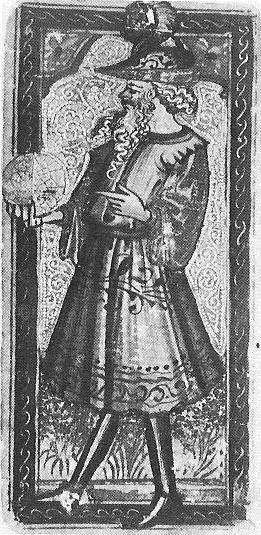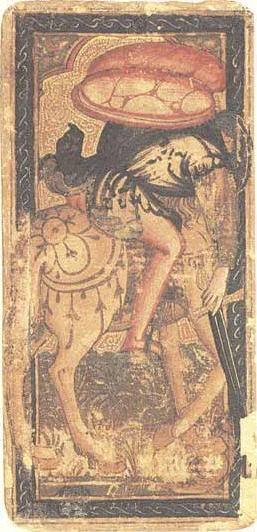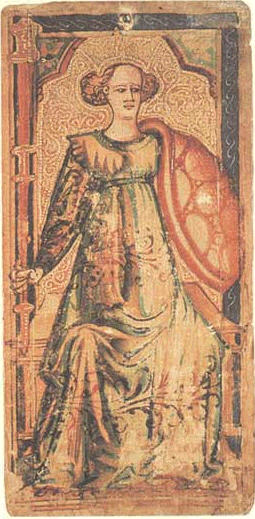Michael Dummett speaks in "Game of Tarot" not of 8 cards in the Rothschild collection as Kaplan, but of 31: "The most complete set other than the three by Bembo is one in the Rothschild collection in the Louvre, consisting of thirty-one cards. It is generally accepted that a single card, a Cavalier of Swords in the Museo Civico at Bassano, bringing the total to thirty-two. Despite a slight divergence in the measurements cited for this card (190 x 90 mmm as against 188 x 90 mm for the Rothschild ones), this identification can scarcely be doubted: not only the general style, but the border design, the overrunning of the border and the arches in the top corners all resemble the Rothschild cards, while the trappings of the horse tally exactly with those of the Rothschild Cavalier de Batons, and the curious tortoise shield with those on the Rothschild King and Queen of Batons. In this set, however, only one triumph card survives, the Emperor; the rest are suit cards." (Dummett notes at this place: "In his Encyclopedia of Tarot, New York, 1978, Stuart Kaplan suggests that another card, shown by him at the top right of p. 121, is also a triumph, the Pope, the Hermit or the World; it is, however, surely the Jack of Coins, though admittedly a bearded Jack is a curiosity. Some writers have questioned wether the 23 numeral cards, whose measurements Detlev Hoffmann gives as 186 x 93 mm, belong with the other 8 Rothschild cards, which measure 185 x 90 mm, according to Hoffmann, and it is true, that their borders do not have the wavy lines found on the court cards and the Emperor. The measurement criterion would be conclusive, save the discrepancies between the measurements made by different individuals are exceedingly common.) The general treatment, though not the individual style is highly similar to the Charles VI. cards, and the two packs are probably to be assigned to the same milieu. The Swords on the numeral cards are curved."


